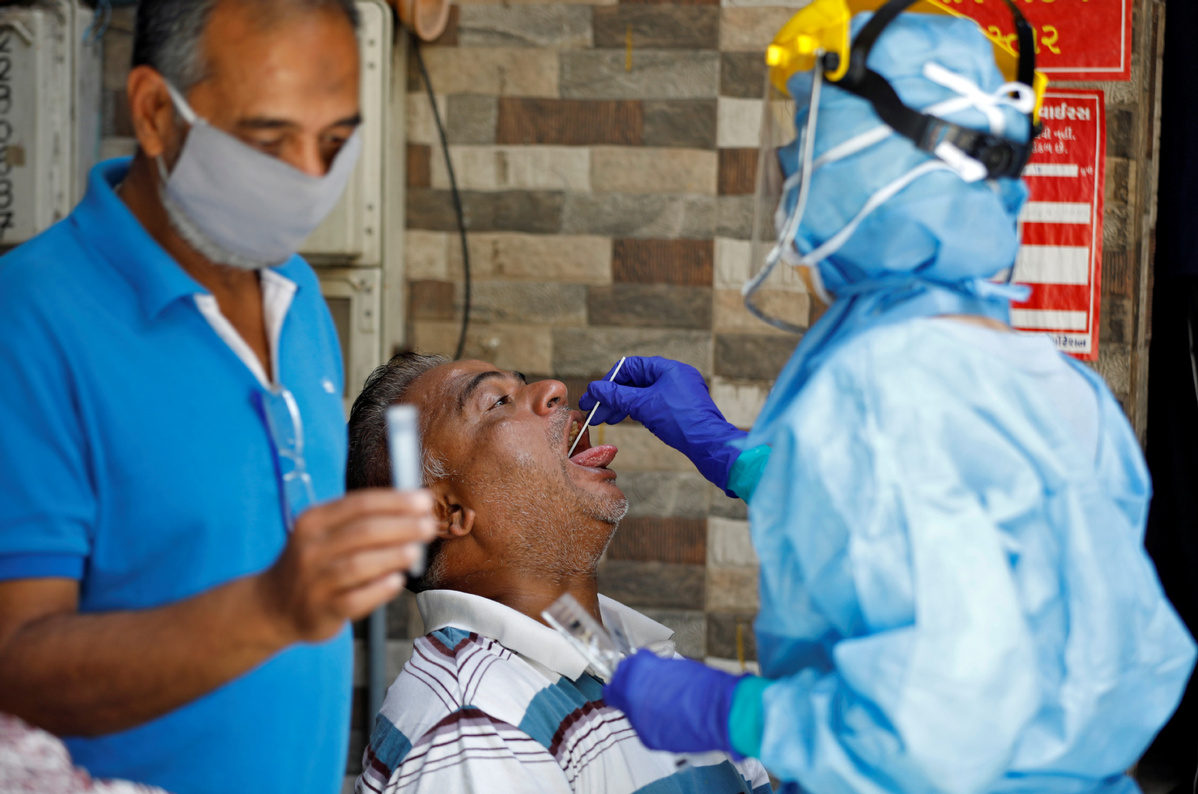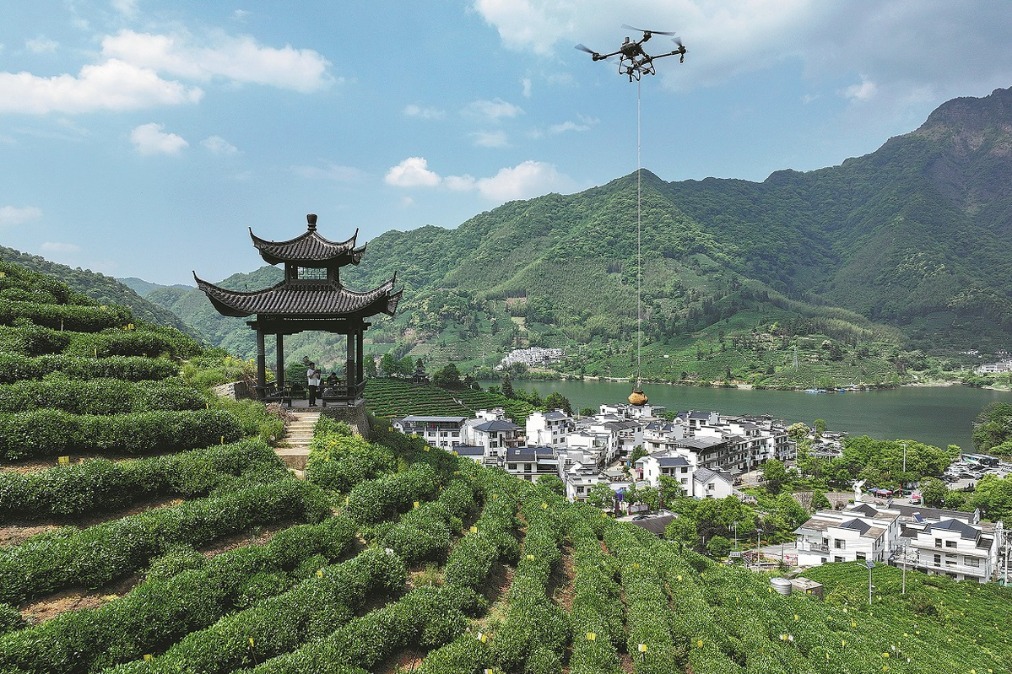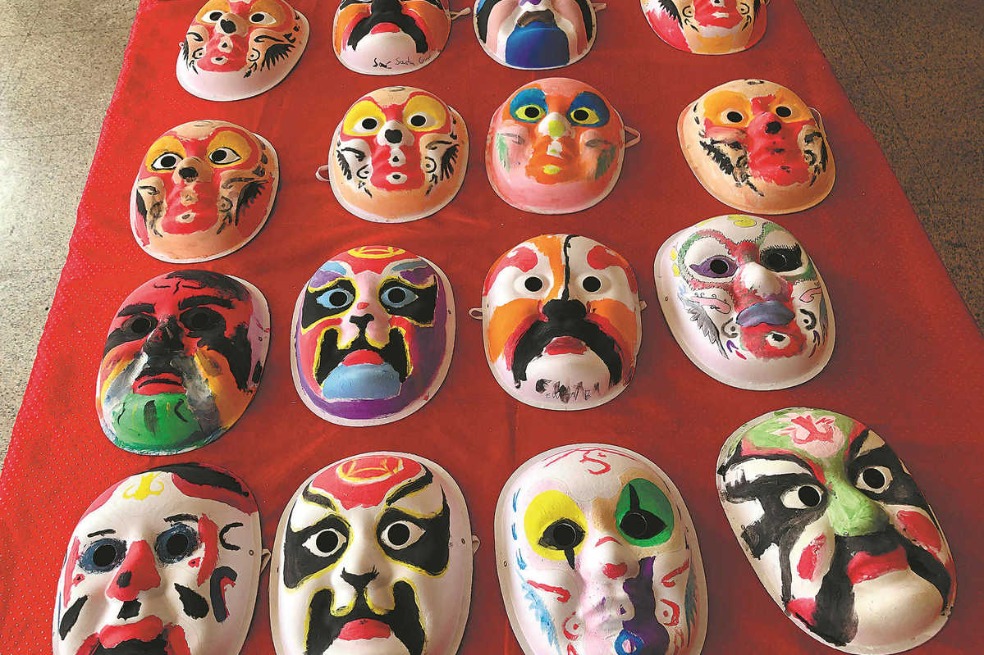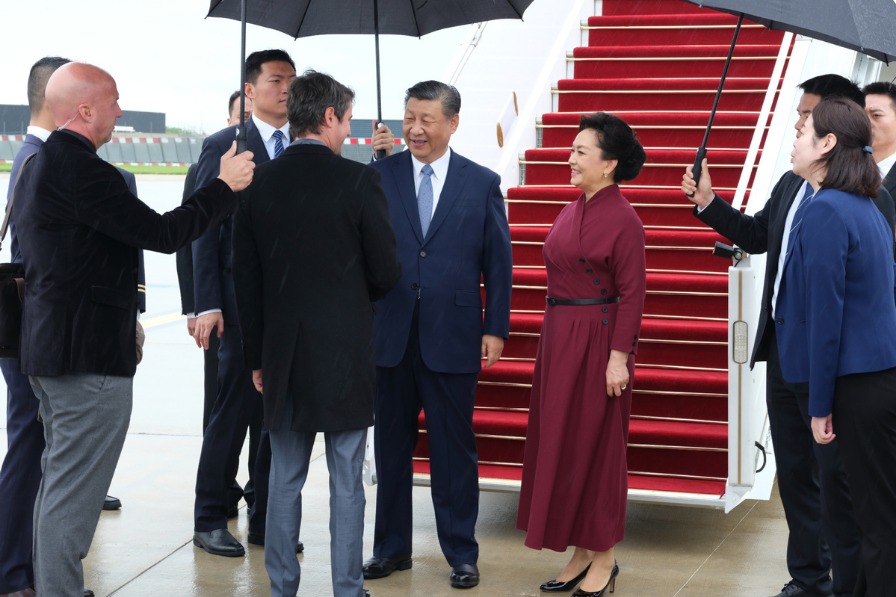India uses multi-pronged plan to fight virus
By Swaran Singh | China Daily | Updated: 2020-04-15 07:12

As the number of novel coronavirus cases in India rises sharply-exceeding 10,000 on Tuesday-the international community is feeling increasingly worried because of the country's massive population of 1.3 billion and relatively low human development indexes. Many experts already say India has moved from the early stages of mostly imported cases and local transmissions to community transmission, which could overwhelm the country's healthcare system.
This fear is also triggered by the fact that trajectories of the spread and control in China, India and the United Statesthe world's three largest countries in terms of population-have varied far too widely to help any reliable prognosis for India's advance planning. The same is true of mid-sized countries that are now being typecast into success and failure categories. With some of these experiencing a "second wave" of infections as many cured people have tested positive for the virus again, all these cases remain inconclusive.
So despite its "advantage" of encountering the outbreak later than other countries, the lessons from China's success or the US' failure or any other country's experience are of limited value and veracity to India. Yet how India handles the outbreak will have major implications on the global war against the pandemic.
Prima facie, India has followed a robust multi-pronged strategy to contain the virus: A nationwide lockdown from March 25 followed by identifying and sealing of hotspots; identifying, testing and quarantining those that have come in contact with infected people; treating the infected; and increasing the number of tests per day by co-opting private testing laboratories.
India is seeking to turn the fight against the virus into a "people's movement" by engaging all domestic and global stakeholders, including the private sector. Many institutions, virologists and epidemiologists, doctors and engineers are collaborating to develop a vaccine; in fact, the trials have already moved to animal testing. Many private companies, from those in the auto sector to breweries, have shifted production to make cost-effective ventilators, testing kits, hand sanitizers, face masks and personal protective equipment.
To boost the moral of frontline workers-especially doctors, nurses and other health workers in hospitals-governments at different levels have announced special insurance covers and other incentives. Some provinces have made unprecedented moves. For example, the Andhra Pradesh provincial government has taken over 58 private hospitals while the Delhi provincial government has been providing frontline health workers with food from the city's five-star hostels, which have come forward to help fight the virus.
Over the weekend, the provincial governments readily supported the central government's idea of extending the three-week nationwide lockdown. On Tuesday, the Indian central government extended the lockdown to May 3. By sealing infection hotspots, so as to contain community transmissions, the extended nationwide lockdown will add a different dimension to India's fight against the epidemic.
What also lends hope is the Indian prime minister tackling the crisis by adopting a hands on approach, holding regular videoconferences with provincial leaders, and national and foreign diplomats, as well as opposition leaders and officials (even calling health workers) while setting up a dozen special committees and two ministerial committees to coordinate work on healthcare and economic packages. India's senior officials have also been attending the videoconferences initiated by Washington and Beijing.
The pandemic has also injected new energy into India-China relations. In January, India sent medical and other emergency supplies to China in the aircraft that flew to Wuhan to bring back Indian students from the epicenter of the outbreak in China, and is now receiving medical supplies from China.
Also, thanks partly to China's supplies of active pharmaceutical ingredients, India is a leader in producing cost-effective generic medicines with its pharmaceutical production being the third highest in the world in terms of volume, although it ranks 13th in value. India's supply of hydroxychloroquine-an antimalarial drug being used to treat COVID-19 patients-has become a hot commodity worldwide, with more than 30 countries, including the US, placing orders for urgent supplies that India has agreed to provide.
But India has also had its share of challenges, with media outlets worldwide reporting on thousands of migrant workers leaving major Indian cities in hoards last month in defiance against instructions on social distancing, because they didn't have enough money to buy food or pay house rentals. Despite detecting the first COVID-19 case on Jan 30 and reporting the first death on March 12, India managed to delay its spread for weeks, but the numbers have now begun to rise.
Hopefully, the fact that India is the only country to impose a nationwide lockdown, first for three weeks and then extending it by another 19 days, will help it improve on China's example in flattening the curve and containing the virus.
The author is chair and professor at the Centre for International Politics, Organisation and Disarmament, Jawaharlal Nehru University, New Delhi.
The views don't necessarily reflect those of China Daily.
























